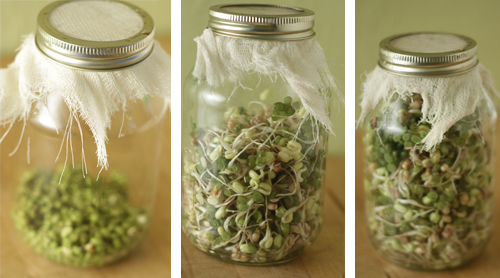Another Salmonella Outbreak Has Been Linked with Raw Sprouts
Reference for more info: http://www.contagionlive.com/news/an...d-with-sprouts
Mullti-State outbreak
Minnesota, Wisconsin, and Illinois, with the Wisconsin-Illinois region appearing to be the focal point of the outbreak
On January 19, 2018, Jimmy John’s announced that it had directed all its locations chain-wide to temporarily stop serving sprouts.
History:
- A Salmonella Saintpaul outbreak in 2009 linked with alfalfa sprouts; 256 cases
- A multistate Salmonella outbreak in 2010 linked with alfalfa sprouts; 140 cases
- A Salmonella outbreak in 2010 linked with clover sprouts; 7 cases
- A multistate E. coli O26 outbreak in 2012 linked with alfalfa sprouts; 29 cases
- A multistate E. coli O121 outbreak in 2014 linked with alfalfa sprouts; 19 cases
Sprouts can sometimes be a “stealth ingredient,” served on salads, sandwiches, or wraps, at food establishments, according to the US Food and Drug Administration, sometimes without any indication. Children, older adults, pregnant women, and immunocompromised individuals should be cognizant of this when eating out and should avoid eating raw or lightly cooked sprouts of any kind.
Most individuals who are infected with Salmonella tend to present with symptoms 12 to 72 hours after exposure to the bacteria, according to the CDC. Salmonella infections usually resolve on their own within 1 week with a treatment of oral fluids. More severe cases may require intravenous rehydration. Antibiotic treatment should only be considered in those patients with serious illness, “such as severe diarrhea, high fever, bloodstream infection, or condition requiring hospitalization.”
“There are a number of approved techniques to kill harmful bacteria that may be present on seeds and even tests for seeds during sprouting. But, no treatment is guaranteed to eliminate all harmful bacteria.”
Warning
Sprouts continue to be a public health concern; in fact, director of the Center for Food Safety at the University of Georgia, Mike Doyle, is quoted as saying “I consider sprouts to be among the most risky foods sold at retail.”
The Wisconsin-Illinois region appears to be the focal point of the outbreak.
- Home
- Forum
- Chat
- Donate
- What's New?
-
Site Links

-
Avalon Library

-
External Sites

- Solari Report | Catherine Austin Fitts
- The Wall Will Fall | Vanessa Beeley
- Unsafe Space | Keri Smith
- Giza Death Star | Joseph P. Farrell
- The Last American Vagabond
- Caitlin Johnstone
- John Pilger
- Voltaire Network
- Suspicious Observers
- Peak Prosperity | Chris Martenson
- Dark Journalist
- The Black Vault
- Global Research | Michael Chossudovsky
- Corbett Report
- Infowars
- Natural News
- Ice Age Farmer
- Dr. Joseph Mercola
- Childrens Health Defense
- Geoengineering Watch | Dane Wigington
- Truthstream Media
- Unlimited Hangout | Whitney Webb
- Wikileaks index
- Vaccine Impact
- Eva Bartlett (In Gaza blog)
- Scott Ritter
- Redacted (Natalie & Clayton Morris)
- Judging Freedom (Andrew Napolitano)
- Alexander Mercouris
- The Duran
- Simplicius The Thinker





 Reply With Quote
Reply With Quote



Bookmarks